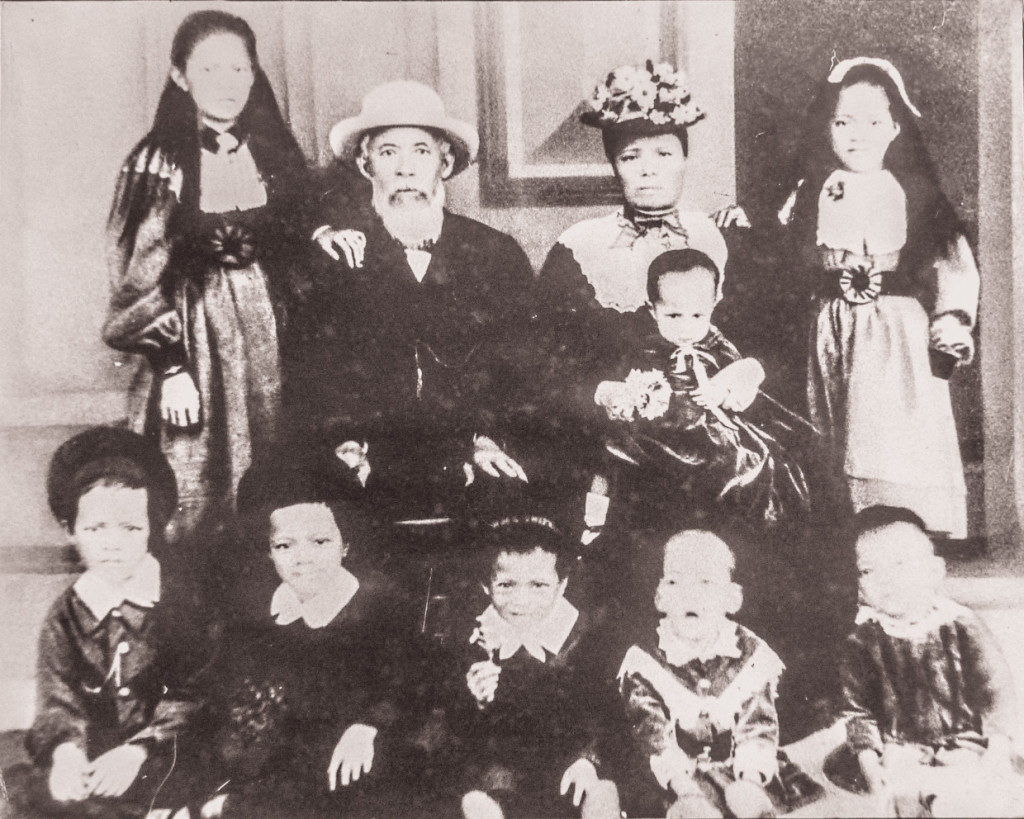THE Chinese diaspora in Fiji is a small but definitely an influential section of multiracial Fiji.
It traces its way to the Old Capital of 19th century Levuka, Ovalau.
Wikipedia notes that the history of Chinese people in Fiji dates to the year 1855, when a gentleman by the name Moy Bak Ling, (also called Houng Lee) reached Fiji in a sailboat from Australia and settled in Levuka.
He later returned to China, before bringing his relatives and some others to settle in Fiji.
An online article titled Fiji: Windows on a turbulent history, which appeared on the website www.nzherald.co.nz on November 17, 2010 reported Moy Bak Ling, went from Duan Feng in China to the Australian goldfields as a 17-year-old boy, lured to the penal colonies by the Australian gold rush.
However, he later fled the “appalling conditions and sailed solo to Levuka in 1855 where his carpentry shop was the first Chinese business established in Fiji.”
Another article found on lisadorenfest.com, says Moy Bak Ling dug for gold in “Ballarat along with 10,000 other Chinese”. But the conditions at the mines were so bad that he took off to Fiji.
“He sailed solo as a 20-year-old from Ballarat, Australia to Levuka in 1855. A carpenter by profession, Moy Bak Ling’s shop in Levuka was the first Chinese business to set up in Fiji,” the article noted.
According to The Fiji Times, a steamer ship belonging to the Australian Steam Navigation Company (ASNC) later arrived in Levuka in 1881 with a number of interesting items on board.
The first special thing on the ship was its network of light bulbs. It was the first time in Fiji a boat had been spotted installed throughout with electric bulbs.
Residents of Levuka were curious when they saw this for they had only heard of Thomas Edison’s announcement of discovering electricity in America a few months before.
The ASNC’s steamer, which carried both passengers and cargo, was also the first to give Fiji residents the opportunity to have ice.
As a result, an ice factory was established in Levuka in 1884. During this period, the first ice-cream could be bought at the bread and cake shop of Alfred Stevens, the proprietor of the ice factory.
A business of delivering ice daily was started by a young boy who carried blocks of 12 by 12 by seven inches of ice on his shoulders.
“Many of the houses were built on the hills and the delivery was therefore slow, and the share of ice you got for your money depended on how much had melted away in the heat of the sun. Such were our early experiences with electricity, ice and ice-cream in Fiji,” said Arthur Griffiths in his book, Memories of Fiji.
Arthur was the son of The Fiji Times founder, George Littleton Griffiths who started the newspaper in 1869. Arthur took over the newspaper when his father died in 1908.
The ASNC steamer also had the distinct task of bringing to Levuka the first Chinese woman.
She was Mary Young Lee, the wife of Moi Ling, then a local merchant of Levuka and the first Chinese to arrive in Fiji. Mary was the talk of the town because “she actually wears trousers!”
In the book, Chinese in Fiji, Bessie Ng Kumlin Ali said the earliest Chinese of Levuka were largely merchants. They were not “poor, uneducated farmers” and found “trading a useful occupation”.
“Since immigrants were permitted to land only if they had possessed some means of support, the Chinese found trading a useful occupation, but the itinerant nature of this occupation precludes their wives accompanying them,” wrote Ali.
“In 1888, when there were barely 30 of them, Chinese occupations were given as traders, cooks and gardeners.”
Ali said trading did not require much capital and because they were in Fiji, without their partners and wives, they were able to move freely into villages, where some got married to local women. Others went back to China to look for wives after making enough money.
Michael Hon-Fay Young, in his writings in the book “Levuka:Living Heritage” said among other reasons, “rising population and economic difficulties” in China in the early 1990s led many young people to look for opportunities abroad, including Fiji.
“This was nothing new for people from the south coast of China who had been moving and trading with islands of Southeast Asia for centuries, and the South Pacific for much of the 1800s. In the early 1900s, America was the preferred destination for Chinese migrants, but Fiji was more open,” said Young.
Young said one of Levuka’s new migrant in the early 1990s was Young Yet. He left school in 1917 and was looking for a job when a Chinese general merchant of Levuka, Nam Sing said they were recruiting workers. A group of young men, including Yet’s father, signed on.
“Some of the recruits worked in the Levuka headquarters of their firm. Others were sent to Lomaiviti Islands to work in the firm’s village stores. Other Chinese of Levuka was engaged in various forms of trade,” Young wrote.
“Some were shopkeepers, carpenters or cooks. Some had yet other occupations but not farming. Although they used shipping a great deal, they generally used the small ships owned by European firms trading in Lomaiviti.”
Baking was a Chinese speciality, so for several generations Chinese were the bakers of Levuka. Young noted that among the families with bakeries were those of Oh Yong Hin (known as Kini) and Wong Wah Sik, who was succeeded by his son Len Wong and grandson Paul Wong.
“Henry Kang’s Bakery is now run by Kang Lee Bakery. Charlie’s Bakery is one of the more recent ones which is still functioning. Another new bakery is Emily’s Café and Bakery owned by Emily and Kwok Wai Au Young, a grand-nephew of Yong Hin,” Young said.
During Levuka’s copra heyday, the Chinese were not involved in the production side of the business, however, they bought from Fijian villagers in return for trade goods.
It is said during the economic depression of the 1930s, the copra trade became unviable anymore.
“Many of the Chinese could no longer earn a living so they left for greener pastures. Some found employment and set up business elsewhere in Fiji, some returned to China, and others emigrated elsewhere,” Young wrote.
“More than 100 Chinese worked in Levuka in its heyday, but as numbers dropped, it became necessary to close the Chinese school. The Chinese soccer team was also disbanded.”
Levuka’s economy received a boost when the tuna canning factory opened in Levuka in 1964. Without this, more Chinese would have left Ovalau, Young said.
About 20 years ago, in 2001, the extended Chinese families in Levuka were “only seven”. Today, most of those who once called the eastern town home have migrated to other parts of Fiji and the world.
On September 17, 2005, the Chinese community in Fiji celebrated the 150th anniversary of their arrival. Then late Vice-President, Ratu Joni Madraiwiwi paid tribute to the contribution the Chinese made in Fiji by saying: “The Chinese community has never been a large one but their influence has been felt far beyond their numbers.”
Chinese people were enfranchised for the first time in 1964. The former European roll was redefined to include other minority groups and renamed the General Electors roll. Despite being only a splinter of the electorate, General Electors were then allocated 10 of the 36 seats in the Legislative Council, as the legislature was then known.
Wikipedia adds that around a thousand Chinese settled in Fiji in the late 1980s and the early 1990s, adding that in February 1995, the Fijian Cabinet approved a plan to allow up to 7000 Hong Kong Chinese to immigrate to Fiji.
“Conditions included payment of $F30,000 to the government, and investment of $F100,000 in government-approved projects. Many of these invested in restaurants, retailing, and market gardening (mostly in Kalabu, Tamavua, Delaivalelevu, Vikoba, Sawani and Waibau), and have intensified horticulture around Suva. A further wave of Chinese has arrived since the late 1990s, many of them from the northern part of China. Many of the more recent immigrants have opened bakeries and other food outlets in Fijian villages, creating employment for local people,” Wikipedia quoted former The Fiji Times editor Samisoni Kakaivalu as saying.
On the morning of March 26, the Chinese Embassy in Fiji hosted an open-day event to mark the 170th anniversary of the arrival of the Chinese in Fiji.
Ambassador Zhou Jian, encouraged everyone to uphold and promote the spirit of perseverance, solidarity, and contribution among the Chinese community in Fiji. He said they should strive to become inheritors of China’s fine traditional culture, contributors to Fiji’s development, and promoters of China-Fiji friendship.
Fiji’s Chinese community has been an integral part of the rich cultural diversity that has made Fiji the dynamic island nation it is today.
Diplomatically and trade-wise, China and Fiji are good friends, good partners and good brothers. Since the establishment of diplomatic ties 50 years ago, bilateral relations between the two countries have made great progress, bringing tangible benefits to the two countries and their peoples.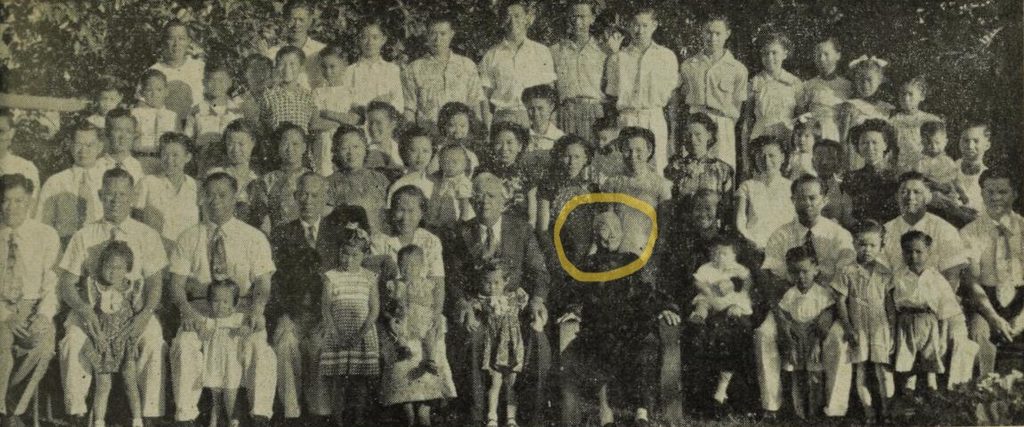
In this photo of the Pacific Islands Monthly’s May 1955 publication, Mary Young Lee (circled wearing traditional Mandarin black, the first Chinese woman in Fiji, celebrates her 99th birthday with her descendants on April 2, 1955, including her four living children (three males and one daughter) and 100 grandchildren and great-grandchildren. Picture: PIM May 1955 issue/Caines Studios
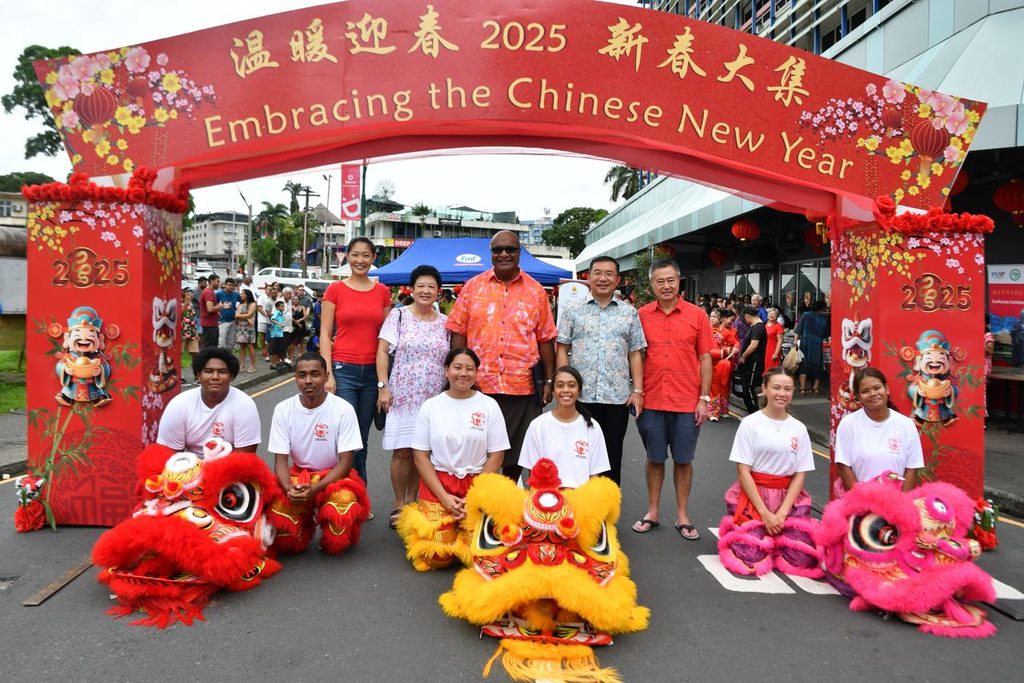
2025 Chinese New Year celebration in Suva.
Picture: Chinese Association of Fiji Facebook Page
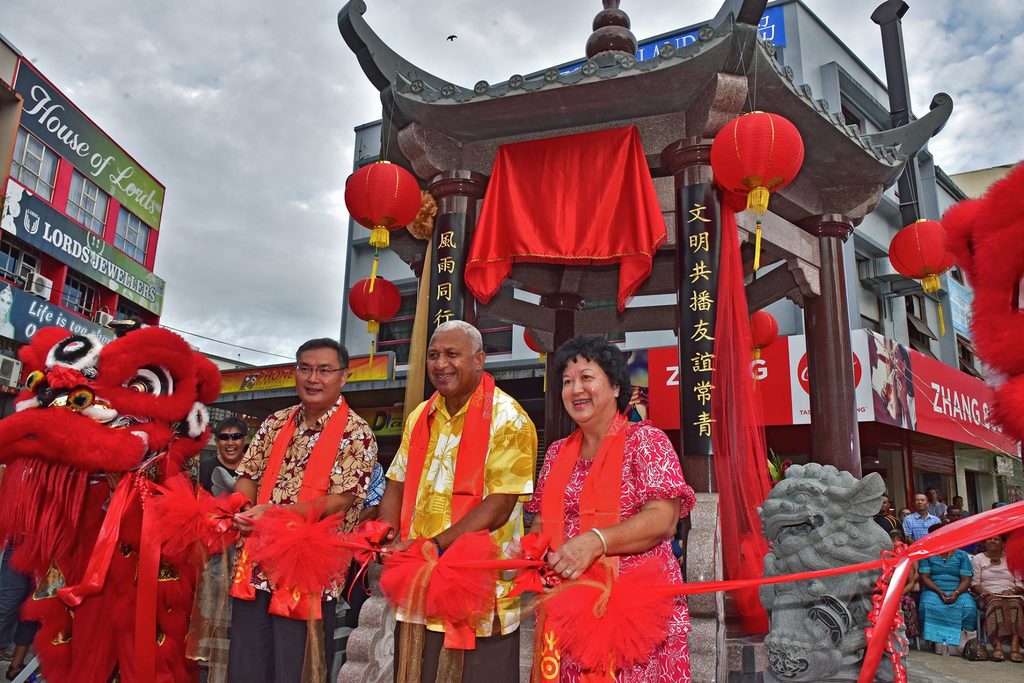
Left: Official opening of the Fiji-China Friendship Pavilion at Terry Walk, Cumming St, Suva in 2017.
Picture: FIJI GOVERNMENT
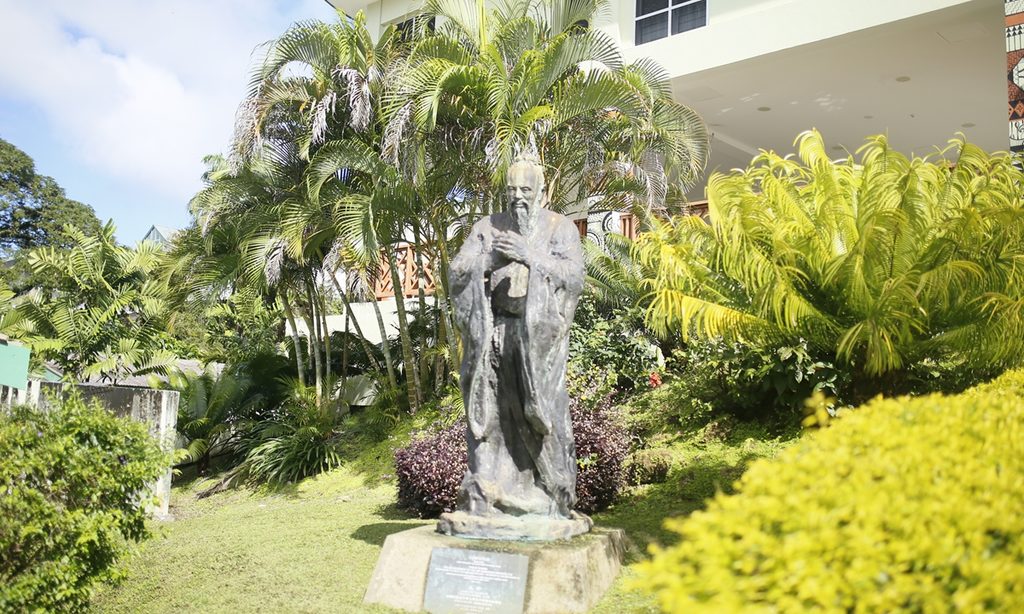
The Confucius Institute of the University of the South Pacific in Suva. Picture: www.globaltimes.cn/ Shan Jie/GT
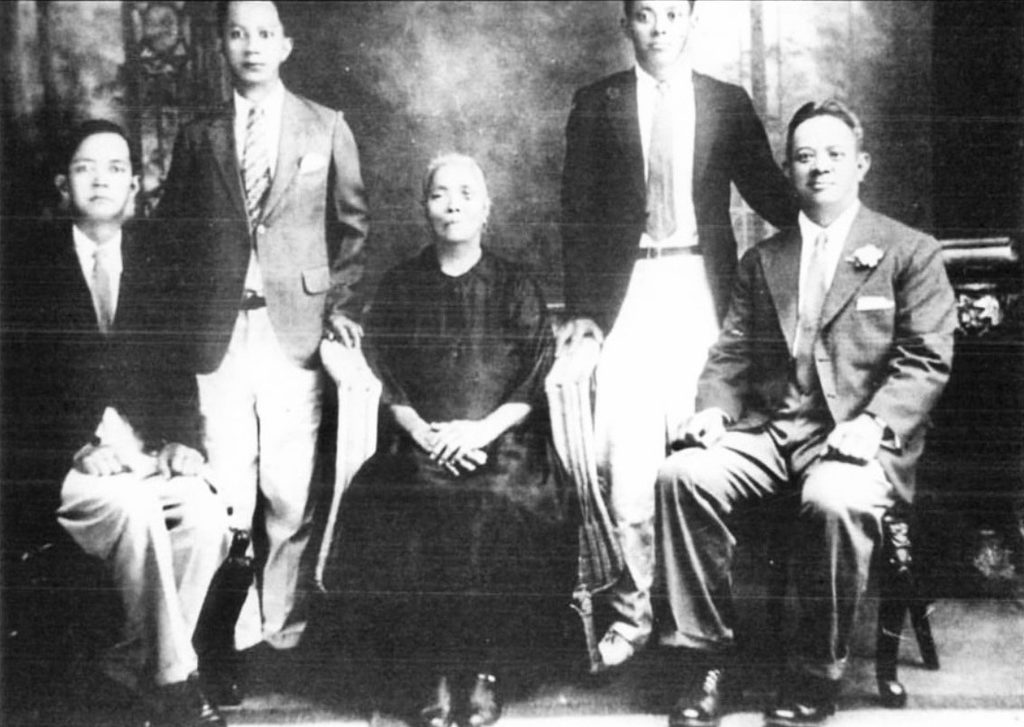
Mary Young Lee and her four sons (from L to R) William, Arthur, Edward and George. Picture: Screengrab from www.instagram.com/poonssupperclub/p/CVAJ8x0hV_7/

